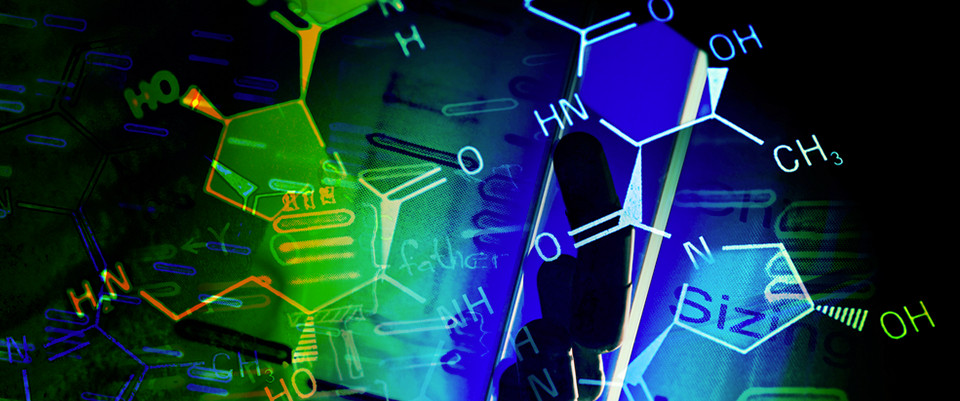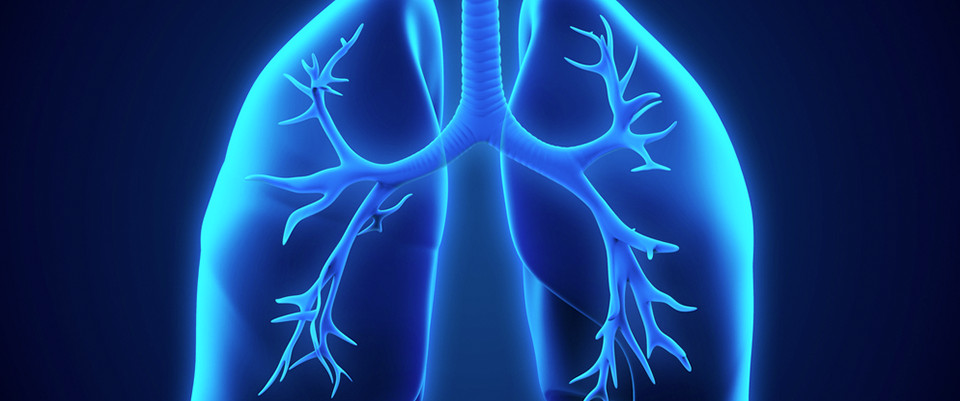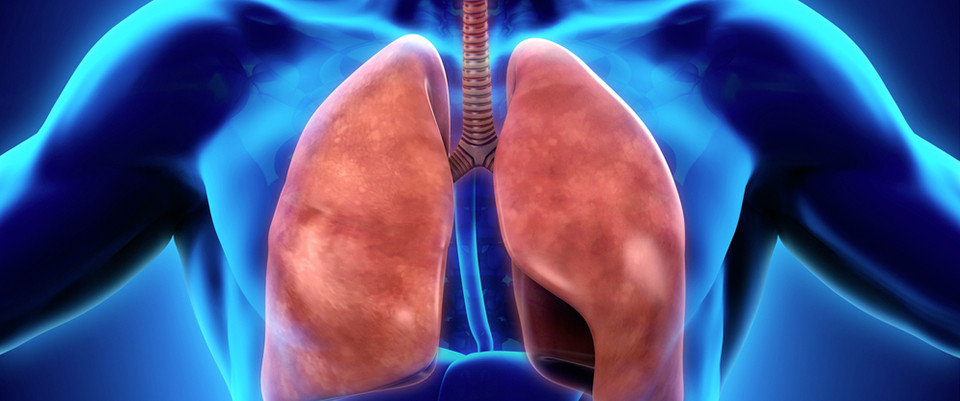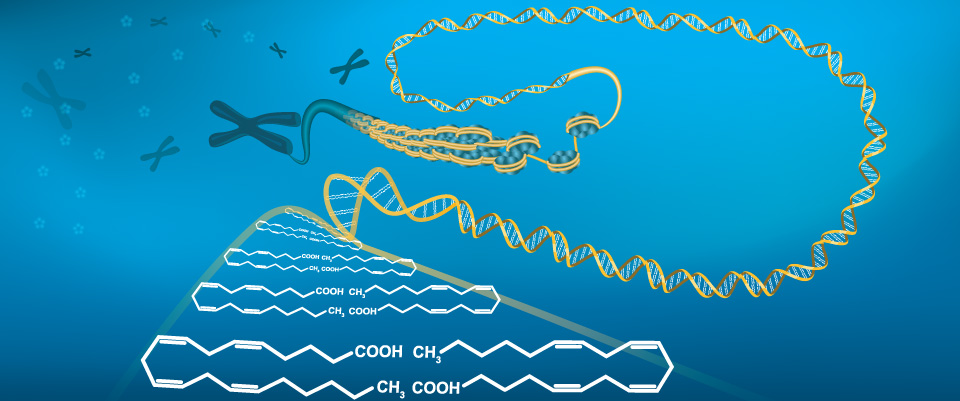PubMed
Effects of <em>Broussonetia papyrifera</em> (L.) L'Hér. ex Vent. fruits water extract on hippocampal neurogenesis in the treatment of APP/PS1 transgenic mice
Front Pharmacol. 2022 Oct 26;13:1056614. doi: 10.3389/fphar.2022.1056614. eCollection 2022.ABSTRACTBackground: Adult neurogenesis plays an important role in repairing damaged neurons and improving cognitive impairment in Alzheimer's disease (AD). B. Papyrifera (L.) L'Hér. ex Vent. fruits (BL), a traditional Chinese medicine for tonifying the kidney, has been reported to improve cognitive function in AD mice, but the underlying mechanisms have not been clearly illuminated. This study aimed to provide an overview of the differential compounds in the brain of APP/PS1 mice after BL water extract (BLWE) treatment through metabolomics technology and to elucidate whether the therapeutic effect and mechanism are through the enhancement of neurogenesis. Methods: APP/PS1 transgenic mice were treated with different doses of BLWE. After 6 weeks of intragastric injection, the therapeutic effects of BLWE on APP/PS1 transgenic mice were determined by the Morris water maze test, immunohistochemistry, hematoxylin & eosin and Nissl staining, enzyme-linked immunosorbent assay and terminal deoxynucleotidyl transferase dUTP nick end labeling staining. Subsequently, metabolomics technology was used to analyze the regulatory effect of BLWE on differential compounds in the brain of APP/PS1 mice, and on this basis, its molecular mechanism of BLWE was screened. Finally, the protein expression of the Wnt/β-catenin signaling pathway was detected by Western blotting. Results: After BLWE treatment, the learning and memory function of APP/PS1 mice were significantly improved, which was related to the increase in the number of Nestin+/BrdU+ and NeuN+/BrdU+ cells, and the decrease in the number of apoptotic cells in the hippocampus. BLWE treatment could also up-regulate the expression of synapse-associated proteins. Moreover, BLWE could modulate endogenous metabolic compounds in the brains of AD mice, including N-acetyl-aspartate, glutamine, etc. Furthermore, BLWE inhibited the phosphorylation of Tyr216-GSK-3β and β-catenin protein while increased CyclinD1 protein expression. Conclusion: We demonstrated that BLWE can enhance neural stem cells proliferation and improve neurogenesis, thereby efficiently repairing damaged neurons in the hippocampus and ameliorating cognitive impairment in APP/PS1 transgenic mice. The mechanism is at least partly through activating the Wnt/β-catenin signaling pathway.PMID:36386124 | PMC:PMC9643563 | DOI:10.3389/fphar.2022.1056614
An UPLC-Q-TOF/MS-Based Analysis of the Differential Composition of Dendrobium officinale in Different Regions
J Anal Methods Chem. 2022 Nov 4;2022:8026410. doi: 10.1155/2022/8026410. eCollection 2022.ABSTRACTDendrobium officinale (D. officinale) is a valuable traditional Chinese herbal medicine with high commercial value. In Chinese Pharmacopoeia (Ch.P., 2020 edition), the quality of D. officinale is mainly evaluated by its polysaccharide content. However, varying growth and production conditions, such as cultivation environment, origin, harvesting process, or processing methods, resulting in highly variable yields, quality, and composition. The aim of this study was to investigate whether the content of secondary metabolites in D. officinale from different origins is consistent with the polysaccharide content. The results showed that the polysaccharide content and pass rate were ranked as GX > AH > GZ > YN. Based on the nontargeted metabolomics approach, we searched for differential components in 22 different regions of D. officinale, including amides, bibenzyls, disaccharide, flavonoids, organic nitrogenous compounds, and phenolic glycosides. The overall expression was opposite to the polysaccharide, and the most expressed was YN, followed by GZ, AH, and GX. These results indicated that the current quality standard for evaluating the quality of D. officinale by polysaccharide content alone is imperfect, and small molecule compounds need to be included as quality markers.PMID:36385774 | PMC:PMC9652072 | DOI:10.1155/2022/8026410
Cold stress triggers freezing tolerance in wheat (Triticum aestivum L.) via hormone regulation and the transcription of related genes
Plant Biol (Stuttg). 2022 Nov 17. doi: 10.1111/plb.13489. Online ahead of print.ABSTRACTLow temperature limits the geographical distribution and yield of plants. Hormones play an important role in coordinating the growth and development of plants and their tolerance to low temperature. However, the mechanisms by which hormones affect plant resistance to extreme cold stress in the natural environment are still unclear. In this study, two winter wheat varieties with different cold resistances, Dn1 and J22, were used to conduct targeted plant hormone metabolome analysis on the tillering nodes of winter wheat at 5 °C, -10 °C and -25 °C using an LC-ESI-MS/MS system. We screened 39 hormones from 88 plant hormone metabolites and constructed a partial regulatory network of auxin, jasmonic acid and cytokinin. GO analysis and enrichment of KEGG pathways in differential metabolites showed that the "plant hormone signal transduction" pathway was the most typical. Our study showed that extreme low temperature increased the levels of most auxin, cytokinin and salicylic acid, and decreased the levels of jasmonic acid and abscisic acid, and the levels of auxin, jasmonic acid and cytokinin in Dn1 were greater than those in J22. These changes in hormone levels were associated with changes in gene expression in synthesis, catabolism, transport and signal transduction pathways. These results seem to be different from the previous hormone regulation mechanisms obtained mostly at 4 °C. Our results provide a basis for further understanding the molecular mechanisms by which plant endogenous hormones regulate plant freeze stress tolerance.PMID:36385725 | DOI:10.1111/plb.13489
Systematic characterization of components of Makyo-kanseki-to granule and serum metabolomics for exploring its protective mechanism against acute lung injury in lipopolysaccharide-induced rats
J Sep Sci. 2022 Nov 17. doi: 10.1002/jssc.202200705. Online ahead of print.ABSTRACTMakyo-kanseki-to has been used for the treatment of pneumonia, becoming a basic formula for COVID-19. However, the chemical profile of Makyo-kanseki-to granule and its possible mechanism against acute lung injury from terminal metabolic regulation have been unclear. The aim of this study was to characterize the constituents in Makyo-kanseki-to granule and reveal the potential related mechanism of Makyo-kanseki-to granule treatment for acute lung injury using a rat model of lipopolysaccharide induced acute lung injury. Totally, 78 constituents were characterized based on ultra-performance liquid chromatography coupled with quadrupole time-of-flight mass spectrometry. Makyo-kanseki-to granule could alleviate acute lung injury through modulating rectal temperature, pulmonary edema, histopathology, processes of inflammatory and oxidative stress. 22 potential biomarkers in acute lung injury rats were identified by metabolomics based on ultra-performance liquid chromatography coupled with quadrupole exactive high field mass spectrometry. They were mainly involved in amino acids and glycerophospholipid metabolism, which were regulated by Makyo-kanseki-to granule. The present results not only increase the understanding on the chemical profile and molecular mechanism of Makyo-kanseki-to granule mediated protection against acute lung injury, but also provide experimental basis and new ideas for further development and clinical application of Makyo-kanseki-to granule. This article is protected by copyright. All rights reserved.PMID:36385590 | DOI:10.1002/jssc.202200705
Lactobacillus rhamnosus GG protects against atherosclerosis by improving ketone body synthesis
Appl Microbiol Biotechnol. 2022 Nov 17. doi: 10.1007/s00253-022-12265-7. Online ahead of print.ABSTRACTAtherosclerosis (AS) is a major cause of death and morbidity worldwide. There is an increasing amount of evidence that the gut microbiota plays an important role in disorders associated with lipid metabolism, such as AS, and alterations in the composition of the gut microbiota and its metabolic potential have been identified as contributing factors in the development of AS. Recently, probiotics have attracted great interest for their excellent cholesterol-lowering ability, their capacity to improve vascular endothelial function, and their participation in the remodeling of the intestinal flora to prevent AS. The incidental findings of our other study suggest that probiotic Lactobacillus rhamnosus GG may be associated with slowing the progression of AS. Thus, we delivered strain GG into mice by oral feeding and found that strain GG could effectively inhibit AS plaque generation. We analyzed the differences in gut microbiota composition and the peripheral blood metabolome in mice after oral feeding of strain GG by 16S DNA sequencing and untargeted metabolomics, respectively. The results showed that strain GG changed the composition of the gut microbiota in mice fed a high-fat diet; elevated the abundance of beneficial bacteria, such as Bilophila and Alistipes, and decreased the abundance of harmful bacteria, such as Deltaproteobacteria. The results of enrichment analysis of the gut microbiota and the peripheral blood metabolome both indicated that the antiatherosclerotic effect of strain GG might be associated with the biosynthesis pathway of ketone bodies. In addition, strain GG attenuated endothelial injury and elevated peripheral blood ketone body content in mice but did not significantly affect low-density lipoprotein cholesterol (LDL-C) and total cholesterol (TC) content. In conclusion, our study provides new evidence that strain GG slows the progression of AS, which may be associated with its improvement of the gut microbiome and peripheral blood metabolome, its ability to increase the abundance of beneficial bacteria, and its participation in unsaturated fatty acid and ketone body synthesis and degradation. KEY POINTS: • L. rhamnosus GG attenuated endothelial injury and atherosclerotic plaque formation • L. rhamnosus GG elevated the abundance of beneficial bacteria • L. rhamnosus GG elevated peripheral blood ketone body content in mice.PMID:36385568 | DOI:10.1007/s00253-022-12265-7
APOE4 impairs myelination via cholesterol dysregulation in oligodendrocytes
Nature. 2022 Nov 16. doi: 10.1038/s41586-022-05439-w. Online ahead of print.ABSTRACTAPOE4 is the strongest genetic risk factor for Alzheimer's disease1-3. However, the effects of APOE4 on the human brain are not fully understood, limiting opportunities to develop targeted therapeutics for individuals carrying APOE4 and other risk factors for Alzheimer's disease4-8. Here, to gain more comprehensive insights into the impact of APOE4 on the human brain, we performed single-cell transcriptomics profiling of post-mortem human brains from APOE4 carriers compared with non-carriers. This revealed that APOE4 is associated with widespread gene expression changes across all cell types of the human brain. Consistent with the biological function of APOE2-6, APOE4 significantly altered signalling pathways associated with cholesterol homeostasis and transport. Confirming these findings with histological and lipidomic analysis of the post-mortem human brain, induced pluripotent stem-cell-derived cells and targeted-replacement mice, we show that cholesterol is aberrantly deposited in oligodendrocytes-myelinating cells that are responsible for insulating and promoting the electrical activity of neurons. We show that altered cholesterol localization in the APOE4 brain coincides with reduced myelination. Pharmacologically facilitating cholesterol transport increases axonal myelination and improves learning and memory in APOE4 mice. We provide a single-cell atlas describing the transcriptional effects of APOE4 on the aging human brain and establish a functional link between APOE4, cholesterol, myelination and memory, offering therapeutic opportunities for Alzheimer's disease.PMID:36385529 | DOI:10.1038/s41586-022-05439-w
<sup>1</sup>H-NMR metabolomic profile of healthy and osteoarthritic canine synovial fluid before and after UC-II supplementation
Sci Rep. 2022 Nov 16;12(1):19716. doi: 10.1038/s41598-022-23977-1.ABSTRACTThe aim of the study was to compare the metabolomic synovial fluid (SF) profile of dogs affected by spontaneous osteoarthritis (OA) and supplemented with undenatured type II collagen (UC-II), with that of healthy control dogs. Client-owned dogs were enrolled in the study and randomized in two different groups, based on the presence/absence of OA (OA group and OA-free group). All dogs were clinically evaluated and underwent SF sampling for 1H-Nuclear Magnetic Resonance spectroscopy (1H-NMR) analysis at time of presentation. All dogs included in OA group were supplemented with UC-II orally administered for 30 days. After this period, they were reassessed (OA-T30). The differences in the 1H-NMR metabolic SFs profiles between groups (OA-free, OA-T0 and OA-T30) were studied. The multivariate statistical analysis performed on SFs under different conditions (OA-T0 vs OA-T30 SFs; OA-T0 vs OA-free SFs and OA-T30 vs OA-free SFs) gave models with excellent goodness of fit and predictive parameters, revealed by a marked separation between groups. β-Hydroxybutyrate was identified as a characteristic compound of osteoarthritic joints, showing the important role of fat metabolism during OA. The absence of β-hydroxybutyrate after UC-II supplementation suggests the supplement's effectiveness in rebalancing the metabolism inside the joint. The unexpectedly high level of lactate in the OA-free group suggests that lactate could not be considered a good marker for OA. These results prove that 1H-NMR-based metabolomic analysis is a valid tool to study and monitor OA and that UC-II improves clinical symptoms and the SF metabolic profile in OA dogs.PMID:36385297 | DOI:10.1038/s41598-022-23977-1
Afucosylation of HLA-specific IgG1 as a potential predictor of antibody pathogenicity in kidney transplantation
Cell Rep Med. 2022 Nov 15;3(11):100818. doi: 10.1016/j.xcrm.2022.100818.ABSTRACTAntibody-mediated rejection (AMR) is the leading cause of graft failure. While donor-specific antibodies (DSAs) are associated with a higher risk of AMR, not all patients with DSAs develop rejection, suggesting that the characteristics of alloantibodies determining their pathogenicity remain undefined. Using human leukocyte antigen (HLA)-A2-specific antibodies as a model, we apply systems serology tools to investigate qualitative features of immunoglobulin G (IgG) alloantibodies including Fc-glycosylation patterns and FcγR-binding properties. Levels of afucosylated anti-A2 antibodies are elevated in seropositive patients, especially those with AMR, suggesting potential cytotoxicity via FcγRIII-mediated mechanisms. Afucosylation of both glycoengineered monoclonal and naturally glycovariant polyclonal serum IgG specific to HLA-A2 drives potentiated binding to, slower dissociation from, and enhanced signaling through FcγRIII, a receptor widely expressed on innate effector cells, and greater cytotoxicity against HLA-A2+ cells mediated by natural killer (NK) cells. Collectively, these results suggest that afucosylated DSA may be a biomarker of AMR and contribute to pathogenesis.PMID:36384101 | DOI:10.1016/j.xcrm.2022.100818
A polyamine-centric, blood-based metabolite panel predictive of poor response to CAR-T cell therapy in large B cell lymphoma
Cell Rep Med. 2022 Nov 15;3(11):100720. doi: 10.1016/j.xcrm.2022.100720.ABSTRACTAnti-CD19 chimeric antigen receptor (CAR) T cell therapy for relapsed or refractory (r/r) large B cell lymphoma (LBCL) results in durable response in only a subset of patients. MYC overexpression in LBCL tumors is associated with poor response to treatment. We tested whether an MYC-driven polyamine signature, as a liquid biopsy, is predictive of response to anti-CD19 CAR-T therapy in patients with r/r LBCL. Elevated plasma acetylated polyamines were associated with non-durable response. Concordantly, increased expression of spermidine synthase, a key enzyme that regulates levels of acetylated spermidine, was prognostic for survival in r/r LBCL. A broad metabolite screen identified additional markers that resulted in a 6-marker panel (6MetP) consisting of acetylspermidine, diacetylspermidine, and lysophospholipids, which was validated in an independent set from another institution as predictive of non-durable response to CAR-T therapy. A polyamine centric metabolomics liquid biopsy panel has predictive value for response to CAR-T therapy in r/r LBCL.PMID:36384092 | DOI:10.1016/j.xcrm.2022.100720
Salivary metabolomic profile in adolescents with juvenile systemic lupus erythematosus
Braz Oral Res. 2022 Nov 11;36:e0128. doi: 10.1590/1807-3107bor-2022.vol36.0128. eCollection 2022.ABSTRACTThe aim of this study was to characterize the salivary metabolomic profile in adolescents with juvenile systemic lupus erythematosus (jSLE). A total of 24 adolescents with jSLE (15.92 ± 2.06 years) and 12 systemically healthy controls (15.25 ± 2.7 years) were included in the study. Participants underwent rheumatologic testing and periodontal examination, with the recording of plaque index (PI), probing depth (PD), clinical attachment level (CAL), and bleeding on probing index (BPI). Unstimulated whole saliva was collected from both groups and stored at -80 ºC. The salivary proton nuclear magnetic resonance (1H-NMR) spectra were acquired in a spectrometer operating at 500 MHz. Partial least squared discriminant analysis (PLS-DA) and orthogonal PLS-DA (O-PLS-DA) were used for statistical analysis. Mean CAL and PI were significantly increased in the group with jSLE (p < 0.01). Patients with jSLE presented a significantly different salivary metabolic profile (accuracy = 0.54; R2 = 0.86; Q2 = -0.293), significantly higher salivary levels of N-acetyl sugars, and significantly reduced levels of phenylalanine, glycine, taurine, hydroxybutyrate, and valerate compared with healthy controls (p < 0.05). It is suggested that the salivary metabolomic profile analyzed by 1H NMR in patients with jSLE presents a different fingerprint that the systemically healthy subjects. Integrating the variation of metabolites with the identification of the metabolic pathways involved seems to provide a better understanding of the influence of systemic disease on salivary metabolites.PMID:36383834 | DOI:10.1590/1807-3107bor-2022.vol36.0128
Clearance of therapeutic antibody glycoforms after subcutaneous and intravenous injection in a porcine model
MAbs. 2022 Jan-Dec;14(1):2145929. doi: 10.1080/19420862.2022.2145929.ABSTRACTA relatively low clearance is one of the prominent favorable features of immunoglobulin G1-based therapeutic monoclonal antibodies (mAbs). Various studies have observed differential clearance of mAb glycoforms, including oligomannose glycoforms, which are considered a critical quality attribute because they show higher clearance than complex type glycoforms. Glycoform clearance, however, has not previously been studied after subcutaneous injection or in a porcine model system. Here, we performed glycoform-resolved pharmacokinetic (PK) analysis of two mAbs in Göttingen minipigs. We found glycoform effects on clearance to be largely the same for subcutaneous and intravenous injection and in line with observations in other species. Oligomannose glycoforms were cleared up to 25% faster and monoantennary glycoforms up to 8% faster than agalactosylated complex glycoforms. Sialylated glycoforms were cleared at approximately the same rate as fully galactosylated glycoforms. Importantly, we report here an impact of galactosylation on the PK of a mAb for the first time. Whether increased galactosylation led to slower or faster clearance seemed to depend on the overall glycosylation profile. When clearance of galactosylated glycoforms was slower, the mAb showed higher galactosylation in serum at maximum concentration after subcutaneous injection compared to both intravenous injection and the injected material. Whether this higher galactosylation after subcutaneous injection has consequences for therapeutic efficacy remains to be investigated. In conclusion, preferential clearance of antibody glycoforms can be simulated in the minipig model with intravenous as well as subcutaneous injections. Furthermore, we observed a glycoform bias in the absorption from skin into circulation after subcutaneous injection based on galactosylation.Abbreviations: AUC - area under the curve; CL/F - apparent clearance as a function of bioavailability following SC administration; Cmax - maximum serum concentration; CQA critical quality attribute; FcγR - Fc gamma receptor; IgG - immunoglobulin G; IV - intravenous; LC-MS - liquid chromatography - mass spectrometry; mAb - therapeutic monoclonal antibody; PK - pharmacokinetics; SC - subcutaneous; TMDD - target-mediated drug disposition.PMID:36383465 | DOI:10.1080/19420862.2022.2145929
Multiomics Analyses Reveal That Long-Term Intake of Hesperetin-7-<em>O</em>-glucoside Modulates the Gut Microbiota and Bile Acid Metabolism in Mice
J Agric Food Chem. 2022 Nov 16. doi: 10.1021/acs.jafc.2c05053. Online ahead of print.ABSTRACTHesperetin-7-O-glucoside (Hes-7-G) is a typical flavonoid monoglucoside, which can be generated from hesperidin with the removal of rhamnose by hydrolysis. Untargeted and targeted metabolomics together with 16S rRNA gene sequencing were employed to explore the exact absorption site of Hes-7-G and its beneficial effect in mice. Intestinal 1H nuclear magnetic resonance (NMR)-based metabolomics screening showed that Hes-7-G is mainly metabolized in the small intestine of mice, especially the ileum segment. Quantification analysis of bile acids (BAs) in the liver, intestinal tract, feces, and serum of mice suggests that Hes-7-G intake accelerates the processes of biosynthesis and excretion of BAs, thus promoting digestion and lowing hepatic cholesterol and triglyceride. 16S rRNA gene sequencing reveals that Hes-7-G significantly elevates the diversity of the gut microbiota in mice, especially those bacteria associated with BA secondary metabolism. These results demonstrated that long-term dietary Hes-7-G plays beneficial roles in health by modulating the gut bacteria and BA metabolism in mice.PMID:36383360 | DOI:10.1021/acs.jafc.2c05053
Metabolites and chemometric study of Perilla (Perilla frutescens) from different varieties and geographical origins
J Food Sci. 2022 Nov 16. doi: 10.1111/1750-3841.16376. Online ahead of print.ABSTRACTPerilla (Perilla frutescens, PF) is an annual labiaceae herb that can be used as vegetable, seasoner, and herb, which mainly includes red PF (P. frutescens var. crispa) and green PF (P. frutescens var. frutescens). Red and green Perilla is mainly used for medicine and food, respectively. In order to explore the differences between these two Perilla cultivars and the effects of origin on them, we studied the components of 130 Perilla samples from different origins by ultra-high performance liquid chromatography quadrupole-time-of-flight mass spectrometry combined with partial least squares discriminant analysis and orthogonal partial least squares discriminant analysis. In this study, 57 potential compounds were analyzed, mainly including organic acids, flavonoids, terpenoids, and anthocyanins. In different varieties of Perilla, anthocyanins were found only in red PF. In addition, the content of four flavonoids, two organic acids, and one coumarin in red PF is much higher than that in green PF. Among the same variety of Perilla, the contents of three metabolites were higher in the north of China for red Perilla, while five metabolites were higher in the south of China for green Perilla. Overall, this research provided a basis for distinguishing different varieties and sources of Perilla through the differential metabolites of Perilla.PMID:36382855 | DOI:10.1111/1750-3841.16376
UPLC-MS-based plasma metabolomics for identifying energy metabolism biomarkers of maintenance in growing pigs
J Anim Physiol Anim Nutr (Berl). 2022 Nov 16. doi: 10.1111/jpn.13789. Online ahead of print.ABSTRACTThe purpose of this study is to explore the potential plasma metabolism biomarkers reflecting the maintenance status of growing pigs. The repeated measurement design was used in this experiment, and six barrows (28.6 ± 0.5 kg BW) were selected and kept in metabolism crates. The feeding level in growing pigs close to ad libitum was 2400 kJ ME/kg BW0.6 ·day-1 during Day 1 to Day 7, while a feeding level of 782 kJ ME/kg BW0.6 ·day-1 was provided as energy requirement for maintenance during Day 8 to Day 14. Plasma samples of each pig were collected from the anterior vena cava on the morning of Day 8 and Day 15. The metabolites of plasma were determined by high-resolution mass spectrometry using a metabolomics approach. Results showed that metabolomics analysis between ad libitum-fed state and maintained status revealed differences in 16 compounds. Identified compounds were enriched in metabolic pathways related to linoleic acid metabolism, tryptophan metabolism, and alanine, aspartate and glutamate metabolism. In conclusion, linoleic acid metabolism, tryptophan metabolism, alanine, aspartate and glutamic acid metabolism pathways played a major regulatory role in the maintenance status of growing pigs. The potential metabolism biomarkers of maintenance in growing pigs were linoleic acid, glutamine and tyrosine.PMID:36382682 | DOI:10.1111/jpn.13789
Early-stage responses to <em>Plasmodiophora brassicae</em> at the transcriptome and metabolome levels in clubroot resistant and susceptible oilseed <em>Brassica napus</em>
Mol Omics. 2022 Nov 16. doi: 10.1039/d2mo00251e. Online ahead of print.ABSTRACTClubroot, a devastating soil-borne root disease, in Brassicaceae is caused by Plasmodiophora brassicae Woronin (P. brassicae W.), an obligate biotrophic protist. Plant growth and development, as well as seed yield of Brassica crops, are severely affected due to this disease. Several reports described the molecular responses of B. napus to P. brassicae; however, information on the early stages of pathogenesis is limited. In this study, we have used transcriptomics and metabolomics to characterize P. brassicae pathogenesis at 1-, 4-, and 7-days post-inoculation (DPI) in clubroot resistant (CR) and susceptible (CS) doubled-haploid (DH) canola lines. When we compared between inoculated and uninoculated groups, a total of 214 and 324 putative genes exhibited differential expression (q-value < 0.05) at one or more time-points in the CR and CS genotypes, respectively. When the inoculated CR and inoculated CS genotypes were compared, 4765 DEGs were differentially expressed (q-value < 0.05) at one or more time-points. Several metabolites related to organic acids (e.g., citrate, pyruvate), amino acids (e.g., proline, aspartate), sugars, and mannitol, were differentially accumulated in roots in response to pathogen infection when the CR and CS genotypes were compared. Several DEGs also corresponded to differentially accumulated metabolites, including pyrroline-5-carboxylate reductase (BnaC04g11450D), citrate synthase (BnaC02g39080D), and pyruvate kinase (BnaC04g23180D) as detected by transcriptome analysis. Our results suggest important roles for these genes in mediating resistance to clubroot disease. To our knowledge, this is the first report of an integrated transcriptome and metabolome analysis aimed at characterizing the molecular basis of resistance to clubroot in canola.PMID:36382681 | DOI:10.1039/d2mo00251e
Multiomic analysis reveals microbiome-related relationships between cocaine use and metabolites
AIDS. 2022 Dec 1;36(15):2089-2099. doi: 10.1097/QAD.0000000000003363. Epub 2022 Aug 18.ABSTRACTOBJECTIVE: Over 19 million individuals globally have a cocaine use disorder, a significant public health crisis. Cocaine has also been associated with a pro-inflammatory state and recently with imbalances in the intestinal microbiota as compared to nonuse. The objective of this pilot study was to characterize the gut microbiota and plasma metabolites in people with HIV (PWH) who use cocaine compared with those who do not.DESIGN: Cross-sectional study.METHODS: A pilot study in PWH was conducted on 25 cocaine users and 25 cocaine nonusers from the Miami Adult Studies on HIV cohort. Stool samples and blood plasma were collected. Bacterial composition was characterized using 16S rRNA sequencing. Metabolomics in plasma were determined using gas and liquid chromatography/mass spectrometry.RESULTS: The relative abundances of the Lachnopspira genus, Oscillospira genus, Bifidobacterium adolescentis species, and Euryarchaeota phylum were significantly higher in the cocaine- using PWH compared to cocaine-nonusing PWH. Cocaine-use was associated with higher levels of several metabolites: products of dopamine catabolism (3-methoxytyrosine and 3-methoxytyramine sulfate), phenylacetate, benzoate, butyrate, and butyrylglycine.CONCLUSIONS: Cocaine use was associated with higher abundances of taxa and metabolites known to be associated with pathogenic states that include gastrointestinal conditions. Understanding key intestinal bacterial functional pathways that are altered due to cocaine use in PWH will provide a better understanding of the relationships between the host intestinal microbiome and potentially provide novel treatments to improve health.PMID:36382433 | DOI:10.1097/QAD.0000000000003363
Foodomics reveals anti-obesity properties of cannabinoids from hemp oil
Mol Nutr Food Res. 2022 Nov 16:e2200508. doi: 10.1002/mnfr.202200508. Online ahead of print.ABSTRACTSCOPE: Molecular networking (MN) analysis intends to provide chemical insight of untargeted mass spectrometry (MS) data to the user's underlying biological questions. Foodomics is the study of chemical compounds in food using advanced omics methods. In this study, we developed an MS-MN-based foodomics approach to investigate the composition and anti-obesity activity of cannabinoids in hemp oil.METHODS AND RESULTS: A total of 16 cannabinoids were determined in optimized microwave pretreatment of hemp oil using the developed approach. Untargeted metabolomics analysis revealed that cannabinoid extract (CE) and its major constituent (cannabidiol, CBD), could alleviate high glucose-induced increases in lipids and carbohydrates, and decreases in amino acid and nucleic acid. Moreover, CE and CBD were also found to suppress the expression levels of mdt-15, sbp-1, fat-5, fat-6, fat-7, daf-2, and elevate the expression level of daf-1,daf-7, daf-16, sod-3, gst-4, lipl-4, resulting in the decrease of lipid synthesis and the enhance of kinetism. Canonical correspondence analysis (CCA) uncovered strong associations between specific metabolic alterations and gene expression levels.CONCLUSION: These findings from this exploratory study offered a new insight into the roles of cannabinoids in the treatment of obesity and related complications. This article is protected by copyright. All rights reserved.PMID:36382382 | DOI:10.1002/mnfr.202200508
Promotion of diet-induced obesity and metabolic syndromes by BID is associated with gut microbiota
Hepatol Commun. 2022 Nov 15. doi: 10.1002/hep4.2052. Online ahead of print.ABSTRACTA growing body of evidence has indicated an expanding functional network of B-cell lymphoma 2 (BCL-2) family proteins beyond regulation of cell death and survival. Here, we examined the role and mechanisms of BH3 interacting-domain death agonist (BID), a pro-death BCL-2 family member, in the development of diet-induced metabolic dysfunction. Mice deficient in bid (bid-/- ) were resistant to high-fat diet (HFD)-induced obesity, hepatic steatosis, and dyslipidemia with an increased insulin sensitivity. Indirect calorimetry analysis indicated that bid deficiency increased metabolic rate and decreased respiratory exchange ratio, suggesting a larger contribution of lipids to overall energy expenditure. While expression of several genes related to lipid accumulation was only increased in wild-type livers, metabolomics analysis revealed a consistent reduction in fatty acids but an increase in certain sugars and Krebs cycle intermediates in bid-/- livers. Gut microbiota (GM) analysis indicated that HFD induced gut dysbiosis with differential patterns in wild-type and in bid-/- mice. Notably, abrogation of GM by antibiotics during HFD feeding eliminated the beneficial effects against obesity and hepatic steatosis conferred by the bid deficiency. Conclusion: These results indicate that the protective role of bid-deficiency against diet-induced metabolic dysfunction interacts with the function of GM.PMID:36382356 | DOI:10.1002/hep4.2052
Currently available molecular analyses for personalized tumor therapy (Review)
Biomed Rep. 2022 Oct 14;17(6):95. doi: 10.3892/br.2022.1578. eCollection 2022 Dec.ABSTRACTTargeted therapies are becoming more common and genetic tumor profiling is becoming more precise and affordable. The aim of the present review was to demonstrate the importance of molecular analyses in tumors, summarize the current situation, provide an outlook on how to improve diagnosis to facilitate individualized therapy, including the use of specific methodologies for tumor marker analysis to improve patient treatment. Most predicted metabolomic and proteomic biomarkers have not progressed from the laboratory to clinical trials, as most of the trials were stopped at the initial stage of biomarker identification. The use of liquid biopsies as a clinical tool improves cancer screening, diagnosis and prognosis; furthermore, is able to improve the classification of more diverse disease entities, assess therapy response and identify treatment-resistant clones, allowing for more stringent patient monitoring. Based on specific clinical populations and the unique molecular features of a cancer, the identification of a suitable targeted therapy may be accomplished. The present review provides insight into cancer genomic testing in the clinical setting and the available methods, supporting the prioritization of molecular therapeutic tumor targeting.PMID:36382257 | PMC:PMC9634049 | DOI:10.3892/br.2022.1578
Advances in multi-omics study of biomarkers of glycolipid metabolism disorder
Comput Struct Biotechnol J. 2022 Oct 25;20:5935-5951. doi: 10.1016/j.csbj.2022.10.030. eCollection 2022.ABSTRACTGlycolipid metabolism disorder are major threats to human health and life. Genetic, environmental, psychological, cellular, and molecular factors contribute to their pathogenesis. Several studies demonstrated that neuroendocrine axis dysfunction, insulin resistance, oxidative stress, chronic inflammatory response, and gut microbiota dysbiosis are core pathological links associated with it. However, the underlying molecular mechanisms and therapeutic targets of glycolipid metabolism disorder remain to be elucidated. Progress in high-throughput technologies has helped clarify the pathophysiology of glycolipid metabolism disorder. In the present review, we explored the ways and means by which genomics, transcriptomics, proteomics, metabolomics, and gut microbiomics could help identify novel candidate biomarkers for the clinical management of glycolipid metabolism disorder. We also discuss the limitations and recommended future research directions of multi-omics studies on these diseases.PMID:36382190 | PMC:PMC9646750 | DOI:10.1016/j.csbj.2022.10.030











